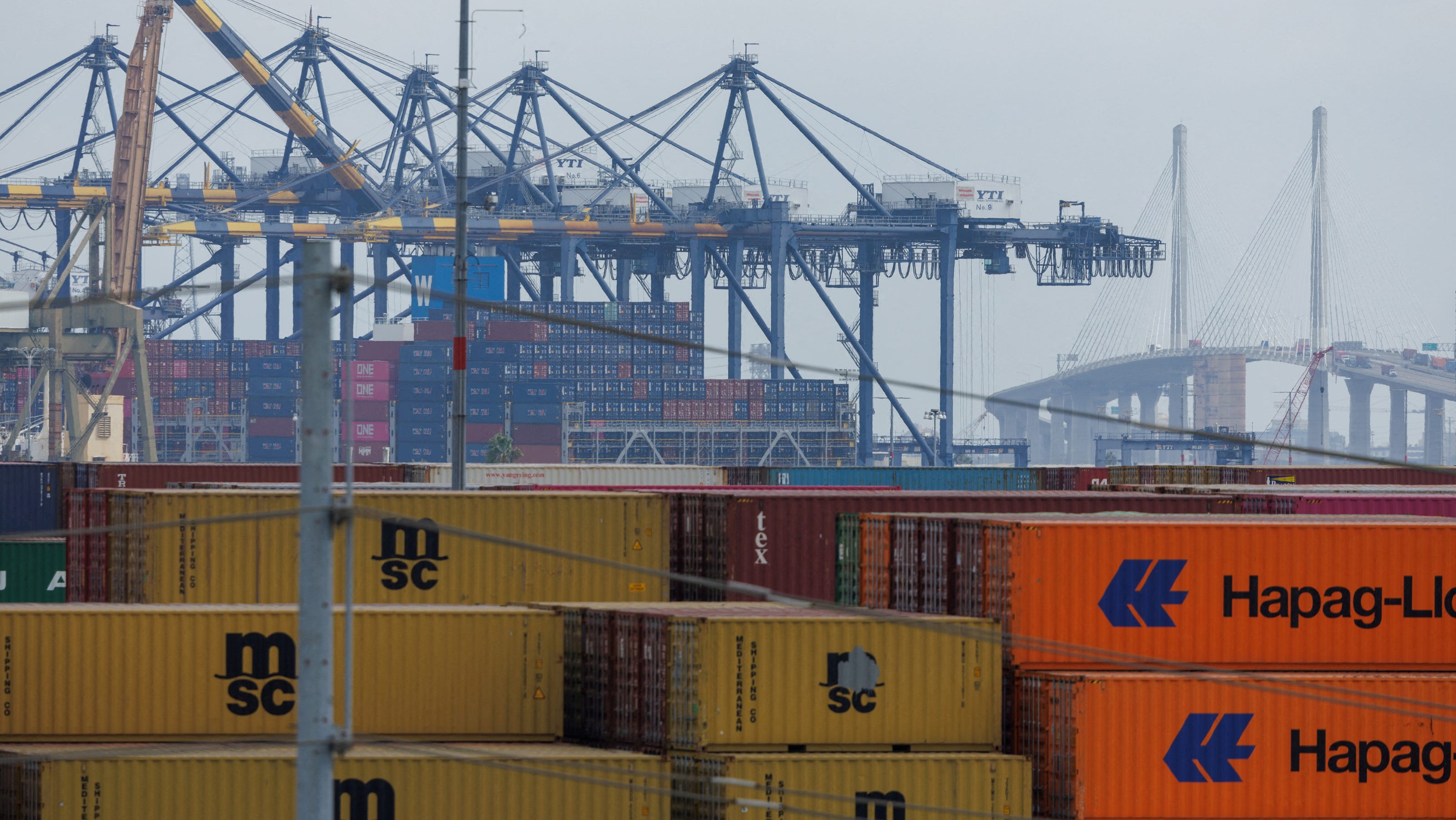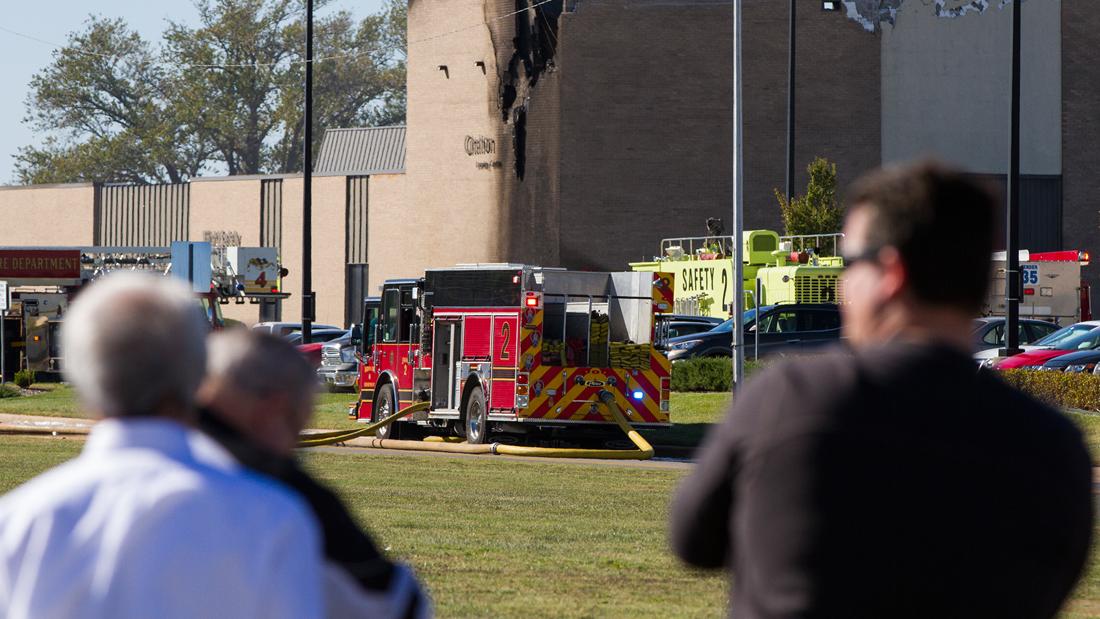Executive Order On Sanctuary Cities: Details Of Trump's Action

Table of Contents
Key Provisions of the Executive Order
The Executive Order on Sanctuary Cities aimed to pressure local jurisdictions into cooperating with federal immigration enforcement by threatening to withhold federal funding. This controversial approach sparked numerous legal challenges and continues to be debated.
Withholding Federal Funds
The order's core provision focused on withholding federal funds from jurisdictions deemed "sanctuary cities." This targeted various types of funding crucial for local operations.
- Specific examples of federal grants potentially affected: This included grants for law enforcement, such as those provided through the Department of Justice's Byrne Justice Assistance Grant Program, as well as funding for transportation infrastructure and community development projects.
- The criteria used to define a "sanctuary city": The order lacked a precise definition, leading to significant ambiguity and legal challenges. The criteria were broadly interpreted to include policies that limited cooperation with Immigration and Customs Enforcement (ICE) in detaining or transferring undocumented immigrants.
- The process for determining which cities would lose funding: The process was unclear and subject to interpretation, adding to the legal battles surrounding the order. The Department of Homeland Security (DHS) was tasked with identifying non-compliant jurisdictions, but the criteria remained vague and contested.
Enforcement and Reporting Requirements
The executive order imposed stringent reporting requirements on local governments to demonstrate compliance with federal immigration enforcement protocols. These requirements were designed to monitor and enforce cooperation.
- Details on the required reporting processes: Local governments were required to submit detailed reports outlining their policies and practices related to immigration enforcement. This included information on the detention and transfer of undocumented immigrants.
- Consequences for non-compliance: The potential consequences included the loss of significant federal funding, creating considerable financial pressure on local governments.
- The role of the Department of Justice (DOJ) in enforcement: The DOJ played a significant role in overseeing compliance and potentially initiating legal action against non-compliant jurisdictions.
Defining "Sanctuary City"
A central point of contention was the lack of a clear, legally-defined "sanctuary city." This ambiguity fueled much of the legal opposition.
- Different approaches taken by cities to limit cooperation with federal immigration authorities: Some cities limited cooperation by refusing to hold individuals solely based on ICE detainer requests, while others adopted policies prioritizing community safety and trust over direct collaboration with federal immigration agencies.
- The legal challenges surrounding the definition's vagueness: The lack of a precise definition was a major source of legal challenges, with cities arguing that the order was unconstitutionally vague and violated their rights.
- Examples of policies considered to make a city a "sanctuary": Policies such as limiting the use of local law enforcement resources for immigration enforcement or prohibiting inquiries into immigration status were often cited as contributing factors to a city being labeled a "sanctuary."
Legal Challenges and Court Battles
The Executive Order on Sanctuary Cities faced immediate and widespread legal challenges from numerous cities and states. These challenges raised fundamental constitutional questions.
Constitutional Arguments
Opponents argued the order violated core constitutional principles.
- Key Supreme Court cases relevant to the arguments: Cases concerning federalism, states' rights, and the Tenth Amendment were central to the legal arguments. Precedent regarding the balance of power between federal and state governments played a significant role.
- Specific legal precedents cited in court challenges: Opponents cited various Supreme Court cases highlighting the limitations on the federal government's ability to coerce state and local governments.
- Outcomes of key court cases: Many courts blocked key provisions of the order, citing concerns about its constitutionality and the lack of a clear definition of "sanctuary city."
Impact on Local Governments
The legal battles placed a significant burden on sanctuary cities.
- Examples of costs incurred by cities in legal battles: Cities incurred substantial legal fees defending against the order, diverting resources from other essential services.
- The impact of uncertainty on city planning and budgeting: The uncertainty surrounding the order made it difficult for cities to plan budgets and allocate resources effectively.
- The effect on local law enforcement operations: The order created tension and uncertainty within local law enforcement agencies, impacting their relationships with immigrant communities.
Long-Term Effects and Current Status
The Executive Order on Sanctuary Cities has had lasting effects on immigration policy and federal-local relations.
Shift in Immigration Policy
The order significantly impacted the landscape of immigration enforcement.
- Changes in immigration enforcement practices: The order spurred increased scrutiny of local jurisdictions and intensified the focus on federal immigration enforcement.
- The impact on immigrant communities: The order fostered fear and distrust within immigrant communities, impacting their interactions with law enforcement.
- The evolving relationship between federal and local authorities: The order strained the relationship between federal and local authorities, exacerbating existing tensions.
Political Ramifications
The order has profoundly impacted the political landscape and public opinion.
- Public opinion polls on sanctuary cities and the executive order: Public opinion remains divided on the issue of sanctuary cities and the executive order, reflecting deep partisan divisions.
- Impact on elections and political campaigns: The issue became a key battleground in numerous elections, shaping political discourse and campaign strategies.
- Legislative responses at the state and local levels: State and local governments responded with legislation reflecting their positions on sanctuary cities and immigration enforcement.
Conclusion:
The Trump administration's Executive Order on Sanctuary Cities represents a significant and highly contentious chapter in US immigration history. While aiming to compel local cooperation with federal immigration enforcement, the order faced extensive legal challenges and sparked continuous debate about federalism, states' rights, and due process. Understanding the intricacies of this executive order, its legal ramifications, and its enduring consequences is vital for anyone following immigration policy and its complex interplay with local governance. For a deeper understanding of the legal battles and ongoing repercussions, continue your research into the Executive Order on Sanctuary Cities and its impact on local municipalities.

Featured Posts
-
 Scandal Hit Pw C A Global Accounting Firms Strategic Retreat
Apr 29, 2025
Scandal Hit Pw C A Global Accounting Firms Strategic Retreat
Apr 29, 2025 -
 Exclusive Goldman Sachs Insights Helping Countries Respond To Trumps Tariffs
Apr 29, 2025
Exclusive Goldman Sachs Insights Helping Countries Respond To Trumps Tariffs
Apr 29, 2025 -
 2025 Louisville Battered By Snow Tornadoes And Unprecedented Flooding
Apr 29, 2025
2025 Louisville Battered By Snow Tornadoes And Unprecedented Flooding
Apr 29, 2025 -
 Black Hawk Helicopter Crash In Wichita Nyt Report Details Final Moments
Apr 29, 2025
Black Hawk Helicopter Crash In Wichita Nyt Report Details Final Moments
Apr 29, 2025 -
 U S Dollar Performance Under Scrutiny A Nixon Era Parallel
Apr 29, 2025
U S Dollar Performance Under Scrutiny A Nixon Era Parallel
Apr 29, 2025
Latest Posts
-
 Is Bar Roma Worth The Hype A Blog To Toronto Review
May 13, 2025
Is Bar Roma Worth The Hype A Blog To Toronto Review
May 13, 2025 -
 The Impact Of Wildfires On The Uks Rarest And Most Endangered Species
May 13, 2025
The Impact Of Wildfires On The Uks Rarest And Most Endangered Species
May 13, 2025 -
 Bar Roma Your Guide To This Popular Toronto Bar Blog To
May 13, 2025
Bar Roma Your Guide To This Popular Toronto Bar Blog To
May 13, 2025 -
 Extinction Crisis Uk Wildfires Kill And Critically Endanger Rare Wildlife
May 13, 2025
Extinction Crisis Uk Wildfires Kill And Critically Endanger Rare Wildlife
May 13, 2025 -
 Hasil Playoff Liga 2 Persipura Jayapura Menang Spektakuler 8 0 Atas Rans Fc
May 13, 2025
Hasil Playoff Liga 2 Persipura Jayapura Menang Spektakuler 8 0 Atas Rans Fc
May 13, 2025
